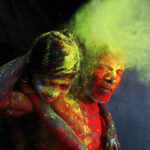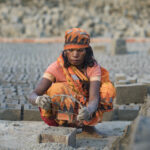In the age of smartphones and social media, the power of an image has never been more evident. But beyond the glamorous world of fashion shoots and landscape captures, there’s a niche of photographers who wield their cameras as tools for change – the humanitarian photographers.
The Role of Photography in Humanitarianism
Photography has always been intertwined with humanitarian efforts. From the haunting images of war-torn regions to the hopeful faces of those receiving aid, photographs play an essential role in creating awareness, evoking empathy, and driving action.
While a written report might detail the specifics of a crisis, a photograph can capture the raw emotion of the situation. The heart-wrenching image of a child in a famine-hit area or the hopeful eyes of a refugee mother holding her child – these are the visuals that stay etched in our minds, often pushing us towards action.
Ethical Considerations
However, with great power comes great responsibility. Humanitarian photography walks a fine line between raising awareness and exploitation. The ethical considerations are manifold. How does one capture suffering without reducing individuals to mere symbols? Or ensure that the narrative remains true to the subject’s experience rather than being sensationalized for impact?
The key lies in approach and intent. True humanitarian photographers prioritize dignity, ensuring subjects are represented with respect and their stories told authentically.
The Impact and the Future
The impact of humanitarian photography is profound. Organizations have used impactful images to drive fundraising campaigns, leading to tangible aid and assistance for affected communities. Moreover, photographs have the potential to shape public opinion, influencing policy decisions and international relations.
Looking ahead, the fusion of technology, like drones and 360-degree cameras, with humanitarian efforts promises an even more immersive experience. Virtual reality might soon transport us right to the heart of a refugee camp or disaster-struck area, amplifying empathy and strengthening the bridge between the observer and the observed.
Closing Thoughts
In a world saturated with images, the role of humanitarian photographers becomes ever more crucial. Their lens, imbued with compassion and intent, has the power to change the world. And as viewers, our responsibility lies in ensuring that we engage, share, and act, turning empathy into tangible support for those in need.











